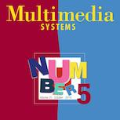LibRec 精选:AutoML for Contextual Bandits
LibRec 精选
>> 愿无岁月可回头,且以深情共白首。
【博客】 基于深度学习的音乐推荐系统,链接:https://t.co/S2TZgpCV1s
【招聘】 Senior Applied Scientist - Recommendations (at Twitch, San Francisco, CA),链接:https://boards.greenhouse.io/twitch/jobs/4407879002
【博客】 How to create a production-ready recommender systems,链接:https://towardsdatascience.com/how-to-create-a-production-ready-recommender-system-3c932752f8ea
【开源项目】 TOROS Buffalo: A fast and scalable production-ready open source project for recommender systems,链接:https://github.com/kakao/buffalo
近期热点论文
1. Heterogeneous Collaborative Filtering
Yifang Liu, Zhentao Xu, Cong Hui, Yi Xuan, Jessie Chen, Yuanming Shan
https://arxiv.org/abs/1909.01727
Recommendation system is important to a content sharing/creating social network. Collaborative filtering is a widely-adopted technology in conventional recommenders, which is based on similarity between positively engaged content items involving the same users. Conventional collaborative filtering (CCF) suffers from cold start problem and narrow content diversity. We propose a new recommendation approach, heterogeneous collaborative filtering (HCF) to tackle these challenges at the root, while keeping the strength of collaborative filtering. We present two implementation algorithms of HCF for content recommendation and content dissemination. Experiment results demonstrate that our approach improve the recommendation quality in a real world social network for content creating and sharing.
2. Towards Evaluating User Profiling Methods Based on Explicit Ratings on Item Features
Luca Luciano Costanzo, Yashar Deldjoo, Maurizio Ferrari Dacrema, Markus Schedl, Paolo Cremonesi
https://arxiv.org/abs/1908.11055
In order to improve the accuracy of recommendations, many recommender systems nowadays use side information beyond the user rating matrix, such as item content. The user profile modelling stage, which is a key stage in content-driven RS is barely properly evaluated due to the lack of publicly available datasets that contain user preferences on content features of items. We create a dataset of explicit preferences towards content features of movies, which we release publicly. We then compare the collected explicit user feature preferences and implicit user profiles built via state-of-the-art user profiling models. Our results show a maximum average pairwise cosine similarity of 58.07\% between the explicit feature preferences and the implicit user profiles modelled by the best investigated profiling method and considering movies' genres only. For actors and directors, this maximum similarity is only 9.13\% and 17.24\%, respectively.
3. How big can style be? Addressing high dimensionality for recommending with style
Diogo Goncalves, Liweu Liu, Ana Magalhães
https://arxiv.org/abs/1908.10642
Using embeddings as representations of products is quite commonplace in recommender systems, either by extracting the semantic embeddings of text descriptions, user sessions, collaborative relationships, or product images. In this paper, we present an approach to extract style embeddings for using in fashion recommender systems, with a special focus on style information such as textures, prints, material, etc. The main issue of using such a type of embeddings is its high dimensionality. So, we propose feature reduction solutions alongside the investigation of its influence in the overall task of recommending products of the same style based on their main image. The feature reduction we propose allows for reducing the embedding vector from 600k features to 512, leading to a memory reduction of 99.91\% without critically compromising the quality of the recommendations.
4. Matrix embedding method in match for session-based recommendation
Qizhi Zhang, Yi Lin, Kangle Wu, Yongliang Li, Anxiang Zeng
https://arxiv.org/abs/1908.10180
Session based model is widely used in recommend system. It use the user click sequence as input of a Recurrent Neural Network (RNN), and get the output of the RNN network as the vector embedding of the session, and use the inner product of the vector embedding of session and the vector embedding of the next item as the score that is the metric of the interest to the next item. We generated the model to modify the vector embedding of session to a symmetric matrix embedding, that is equivalent to a quadratic form on the vector space of items. The score is builded as the value of the vector embedding of next item under the quadratic form. The eigenvectors of the symmetric matrix embedding corresponding to the positive eigenvalues are conjectured to represent the interests of user in the session. This method can be used for the "match" stage also. The experiments show that this method is better than the method of vector embedding.
5. CosRec: 2D Convolutional Neural Networks for Sequential Recommendation
An Yan, Shuo Cheng, Wang-Cheng Kang, Mengting Wan, Julian McAuley
https://arxiv.org/abs/1908.09972
Sequential patterns play an important role in building modern recommender systems. To this end, several recommender systems have been built on top of Markov Chains and Recurrent Models (among others). In this paper, we argue that modeling pairwise relationships directly leads to an efficient representation of sequential features and captures complex item correlations. Specifically, we propose a 2D convolutional network for sequential recommendation (CosRec). It encodes a sequence of items into a three-way tensor; learns local features using 2D convolutional filters; and aggregates high-order interactions in a feedforward manner. Quantitative results on two public datasets show that our method outperforms both conventional methods and recent sequence-based approaches, achieving state-of-the-art performance on various evaluation metrics.
6. Assessing Fashion Recommendations: A Multifaceted Offline Evaluation Approach
Jake Sherman, Chinmay Shukla, Rhonda Textor, Su Zhang, Amy A. Winecoff
Fashion is a unique domain for developing recommender systems (RS). Personalization is critical to fashion users. As a result, highly accurate recommendations are not sufficient unless they are also specific to users. Critical to addressing these issues in fashion recommendation is an evaluation strategy that: 1) includes multiple metrics that are relevant to fashion, and 2) is performed within segments of users with different interaction histories. Here, we present our multifaceted offline strategy for evaluating fashion RS. Using our proposed evaluation methodology, we compare the performance of three different algorithms, a most popular (MP) items strategy, a collaborative filtering (CF) strategy, and a content-based (CB) strategy.
7. Context-aware Deep Model for Entity Recommendation in Search Engine at Alibaba
Qianghuai Jia, Ningyu Zhang, Nengwei Hua
Entity recommendation, providing search users with an improved experience via assisting them in finding related entities for a given query, has become an indispensable feature of today's search engines. In this work, we believe that contexts convey valuable evidence that could facilitate the semantic modeling of queries, and take them into consideration for entity recommendation. In order to better model the semantics of queries and entities, we learn the representation of queries and entities jointly with attentive deep neural networks. We evaluate our approach using large-scale, real-world search logs from a widely used commercial Chinese search engine.Results from online A/B test suggest that the impression efficiency of click-through rate increased by 5.1% and page view increased by 5.5%.
8. AutoML for Contextual Bandits
Praneet Dutta, Man Kit, Cheuk, Jonathan S Kim, Massimo Mascaro
Contextual Bandits is one of the widely popular techniques used in applications such as personalization, recommendation systems, mobile health, causal marketing etc . We propose an end to end automated meta-learning pipeline to approximate the optimal Q function for contextual bandits problems. We see that our model is able to perform much better than random exploration, being more regret efficient and able to converge with a limited number of samples, while remaining very general and easy to use due to the meta-learning approach. We used a linearly annealed e-greedy exploration policy to define the exploration vs exploitation schedule. We see that our model outperforms or performs comparatively to other models while requiring no tuning nor feature engineering.
9. Compositional Embeddings Using Complementary Partitions for Memory-Efficient Recommendation Systems
Hao-Jun Michael Shi, Dheevatsa Mudigere, Maxim Naumov, Jiyan Yang
Modern deep learning-based recommendation systems exploit hundreds to thousands of different categorical features, each with millions of different categories ranging from clicks to posts. We propose a novel approach for reducing the embedding size in an end-to-end fashion by exploiting complementary partitions of the category set to produce a unique embedding vector for each category without explicit definition. By storing multiple smaller embedding tables based on each complementary partition and combining embeddings from each table, we define a unique embedding for each category at smaller cost. Our experimental results demonstrate the effectiveness of our approach over the hashing trick for reducing the size of the embedding tables in terms of model loss and accuracy, while retaining a similar reduction in the number of parameters.
10. A Compositional Model of Multi-faceted Trust for Personalized Item Recommendation
Liliana Ardissono, Noemi Mauro
Trust-based recommender systems improve rating prediction with respect to Collaborative Filtering by leveraging the additional information provided by a trust network among users to deal with the cold start problem. In order to address this issue, we extend trust-based recommender systems with additional evidence about trust, based on public anonymous information, and we make them configurable with respect to the data that can be used in the given application domain: 1 - We propose the Multi-faceted Trust Model (MTM) to define trust among users in a compositional way, possibly including or excluding the types of information it contains. MTM flexibly integrates social links with public anonymous feedback received by user profiles and user contributions in social networks. 2 - We propose LOCABAL+, based on MTM, which extends the LOCABAL trust-based recommender system with multi-faceted trust and trust-based social regularization. The combination of MTM with LOCABAL+ thus represents a promising alternative to state-of-the-art trust-based recommender systems.
11. Cross-Cutting Political Awareness through Diverse News Recommendations
Bibek Paudel, Abraham Bernstein
The suggestions generated by most existing recommender systems are known to suffer from a lack of diversity, and other issues like popularity bias. To promote the diversity of views, we developed a novel computational framework that can identify the political leanings of users and the news items they share on online social networks. Based on such information, our system can recommend news items that purposefully expose users to different viewpoints and increase the diversity of their information "diet." Our research on recommendation diversity and political polarization helps us to develop algorithms that measure each user's reaction %to diverse viewpoints and adjust the recommendation accordingly. The result is an approach that exposes users to a variety of political views and will, hopefully, broaden their acceptance (not necessarily the agreement) of various opinions.





